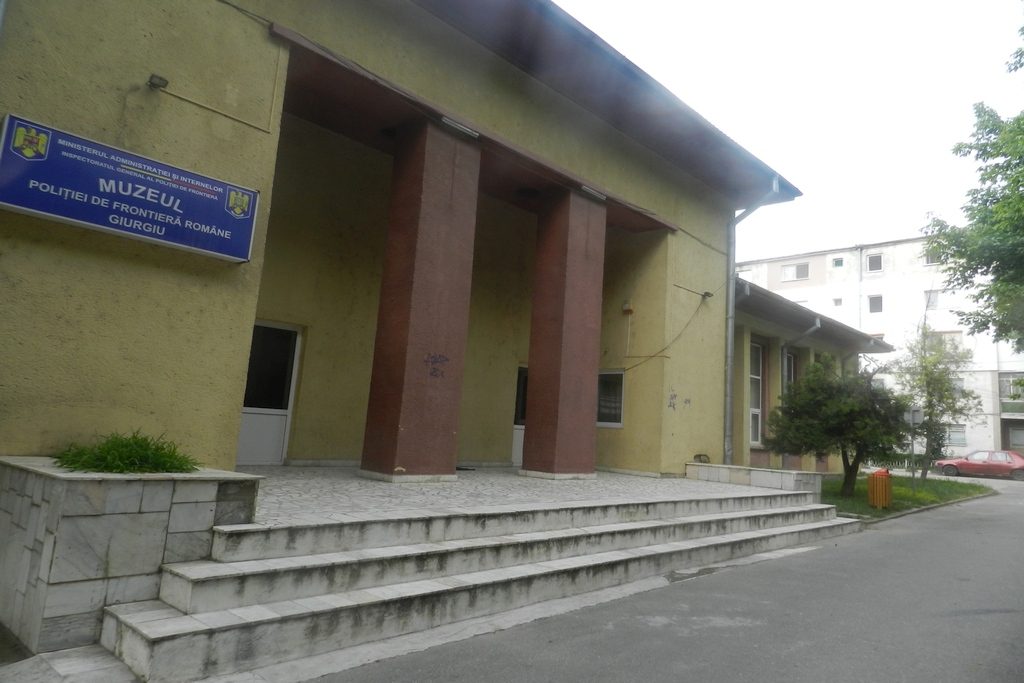

60 years ago, on 20th of June 1954, it was opened for use the metallic deck bridge over the Danube, linking the cities of Giurgiu and Ruse, called at the insistence of the Soviets the „Podul Prieteniei“/”Friendship Bridge”, being at that time the biggest combined bridge – road and rail – in Europe. In The years 1950-1952, for workers involved in construction of the bridge was constructed a building for club and cinema activities. It continued to function as a cultural center, its stage being the Giurgiu’s community host for performances and festivities.
In 1954, by a decision of the Council of Ministers of the Romanian People’s Republic, the actual building of the Museum of the Romanian Border Police was transferred from the use of the General Direction of Work 889, to the use of Ministry of Army, and later used by the Interior Ministry, when the Border Guards Command returned to the structures of the Ministry of Interior by (Law 56/1992- on State Borders).
On 24 iulie 2002, to celebrate 138 years of Border Police institutional existence, the building became the headquarters of the Romanian Border Police Museum, the only one institution of its kind in Romania.
Divided into six exhibition halls plus the performance hall, the institution houses the permanent collection of the museum, made up of struggle flags, border historical uniforms exhibition ”De Veghe la Fruntarii”, the exhibition of current uniforms of the European countries, models of river boats of the Border Police, current weapons and also during two world wars, epaulettes, badges, decorations, historic publications and a large painting representing the battle of Calugareni.
In the main lobby of the building there is the bust of Alexander John Cuza, founder of modern Border Police, sculpted in marble by artist Paul Mercea. Also here is the ”Momentul Războiului de Independență”, where delivery of the Ottoman flag to king Carol the 1st was reconstituted by the soldier from 2nd Battalion of hunters Ion Gregory , ho captured a Turkish flag in the battles to conquer the redoubt of Griviţa I.
The exhibition ”De Veghe la Fruntarii” realised in 2012, with the support of National Cultural Fund Administration continues in the next two exhibition halls, totaling a number of 26 border uniforms from 1806 until now.
The international uniforms hall, is dedicated to ceremonial uniforms from Bulgaria, Ukraine, Turkey, Germany, Spain, Austria, France, Italy and Norway.
In 2008, was inaugurated the „Mihai Viteazu” boardroom, with this event, taking also place the inauguration of painting “Battle of Călugăreni”/„Bătălia de la Călugăreni”. In this hall is hanged a portrait in glass casting of Prince Mihai Viteazu, donated to the museum by the Bishopric of Giurgiu, by Grace Ambrozie, Bishop of Giurgiu.
The armory room exhibits a number of fire weapons comprising pistols, shotguns, automatic and semi-automatic guns and two teaching machine-guns in longitudinal section. The collection of light weapons, daggers and swords during the Independence War and the interwar period.
The collection of flags of the fighting battalions, both the communist era and, of frontier military units after the revolution is divided in all museum rooms.
